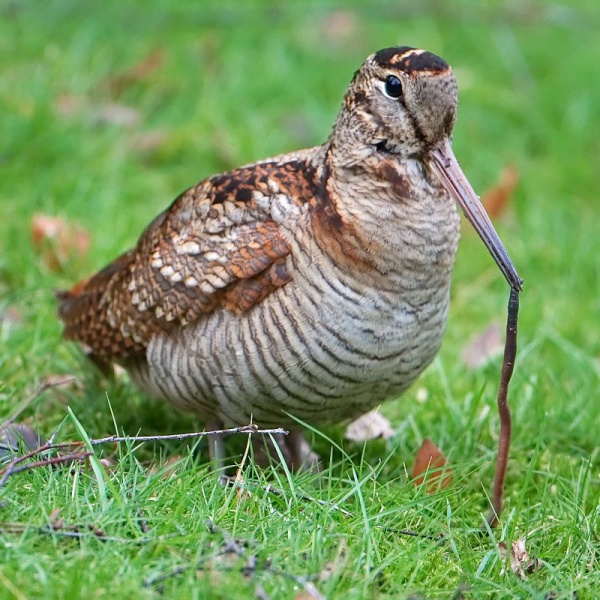Facts About Eurasian woodcock
The Eurasian woodcock is a captivating medium-small wading bird native to the temperate and subarctic regions of Eurasia. Renowned for its exceptional camouflage, this bird features reddish-brown upperparts and buff-colored underparts, allowing it to blend effortlessly into its environment. A notable characteristic is its eye placement, set far back on its head, granting it nearly 360-degree vision.
During spring evenings, male Eurasian woodcocks perform a spectacular courtship display known as 'roding,' where they execute distinctive flights to attract mates. Displaying remarkable maternal instinct, females are even capable of carrying their chicks while flying if they sense danger.
These birds measure approximately 33-38 cm in length, with a wingspan of 55-65 cm. They possess a straight bill, rounded wings, and notably large eyes. The Eurasian woodcock is the only member of its species and is closely related to other woodcocks within the genus Scolopax.
Eurasian woodcocks breed across Europe, from Fennoscandia to the Mediterranean and the Canary Islands. During the winter months, they migrate to milder regions in southern Europe or the Indian Subcontinent. Despite facing threats such as habitat fragmentation and susceptibility to avian influenza, their extensive range and stable population (estimated between 14-16 million) have earned them a conservation status of Least Concern.
These birds are adept foragers, using their long bills to probe the ground for earthworms, insects, mollusks, and seeds. They typically feed at night in pastures and grass meadows. Hunting woodcocks is a popular activity in many areas since they are considered a challenging game bird. Additionally, they are highly regarded in the culinary world, often hung before cooking to enhance tenderness.
Culturally, the Eurasian woodcock has a rich history. In folklore, their arrival was believed to predict harvest outcomes, and some even thought they migrated to the moon during certain months. The bird has inspired surnames, literary references, and artistic expressions, even being featured on postage stamps in various countries.
Whether admired for their unique behaviors, cultural significance, or culinary value, Eurasian woodcocks are truly remarkable birds with a storied presence in human history.

 Myanmar (Burma)
Myanmar (Burma)